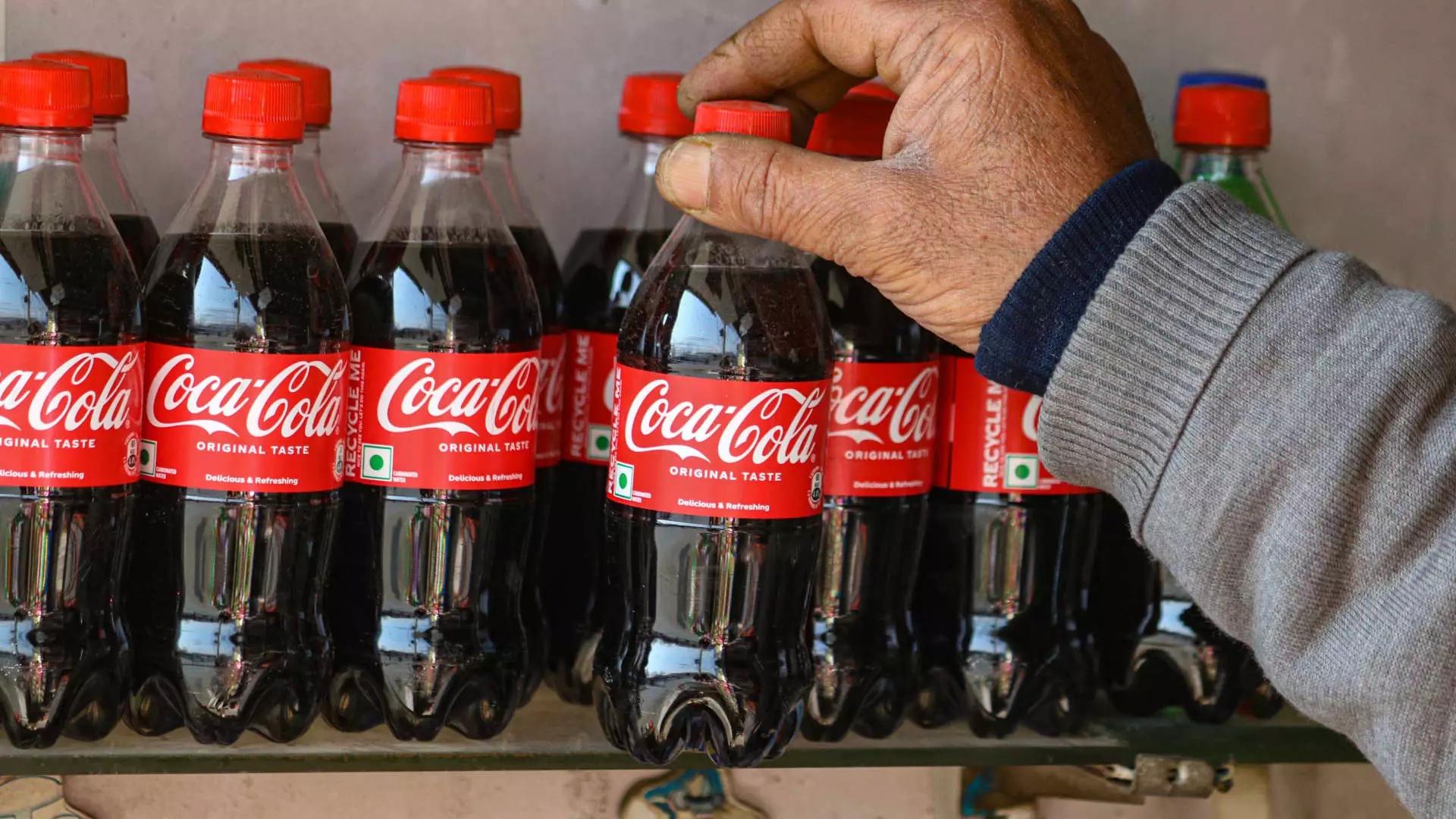Recently, the business world has been watching closely as President Donald Trump has implemented significant changes to tariffs on aluminum and steel imports. With these new tariffs raised to 25% from 10%, many companies, including beverage giant Coca-Cola, are adjusting their strategies to mitigate potential financial impacts. CEO James Quincey outlined the company’s response during a recent earnings call, indicating a potential pivot from aluminum to plastic packaging as a means to maintain competitiveness.
Coca-Cola has traditionally relied heavily on aluminum for its beverage packaging, particularly given its recyclability and consumer appeal. However, the tariff changes present a dilemma. As costs rise with aluminum, Quincey suggested that the company might increase its reliance on PET (polyethylene terephthalate) plastic bottles, which could help alleviate some cost pressures. “For instance, if aluminum cans become more expensive, we can put more emphasis on PET bottles,” he remarked. This speaks to the adaptability of Coca-Cola’s packaging strategy in response to economic shifts.
It’s crucial to note that this strategy does not come without its drawbacks. While PET bottles are lighter and relatively cheaper than their aluminum counterparts, they are recycled at a much lower rate. Statistics from the Environmental Protection Agency indicate that in 2018, the recycling rate for PET was a mere 29.1%, in stark contrast to a 50.4% recycling rate for aluminum cans. This discrepancy presents ethical and environmental concerns, especially in a time when consumers are increasingly aware of the ecological impacts of packaging choices.
On the earnings call, Quincey downplayed the anticipated financial repercussions of the tariffs. He suggested that while the 25% increase in aluminum prices is notable, it will not drastically alter Coca-Cola’s multibillion-dollar business model. He framed the situation as one of many variables in a larger system, emphasizing that packaging constitutes only a small segment of their cost structure. This commentary reflects a confidence that Coca-Cola can navigate these challenges effectively, without compromising its market position.
Nonetheless, this assurance may not fully alleviate concerns among environmentally conscious consumers and shareholders. Critics point out that the switch to plastic could exacerbate Coca-Cola’s negative reputation regarding environmental sustainability. The company has faced significant backlash, having been labeled the “world’s worst polluter” by Greenpeace for its excessive single-use plastic products. This ongoing public scrutiny may pressure the corporation to balance financial maneuvering with sustainable practices.
Compounding the issue is Coca-Cola’s recent alterations to its sustainability goals. Formerly aspiring to use 50% recycled materials by 2030, the new target has been adjusted to only 35% to 40% recycled content by 2035. Such a reduction raises questions about the company’s commitment to environmental responsibility, especially as it continues to rely on plastic packaging, which is less favorable in sustainability dialogues.
Moreover, by aiming to ensure the collection of 70% to 75% of its pledges rather than an ambitious target of recycling equivalent to the total consumption, Coca-Cola appears to be recalibrating its long-term goals, possibly in response to economic pressures exacerbated by recent tariff changes. This shift in focus not only alters the company’s environmental footprint but may also shape consumer perceptions in a marketplace increasingly driven by sustainability.
Coca-Cola stands at a crossroads, balancing financial strategies with corporate responsibility amidst an evolving landscape of tariffs and environmental expectations. The potential switch from aluminum to plastic packaging underscores the complex interplay of economics and sustainable practices within the beverage industry. As the company adapts to maintain its market foothold, it must also consider the repercussions of such decisions—both immediate and long-term—on its brand reputation and ecological impact. The coming years will undoubtedly illuminate whether Coca-Cola can successfully navigate these complexities while remaining a leader in innovation and sustainability.


Leave a Reply